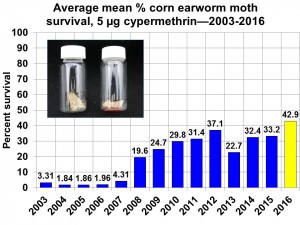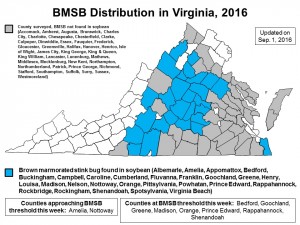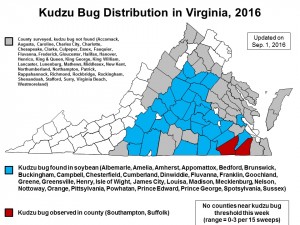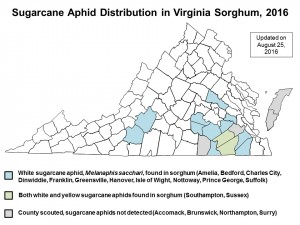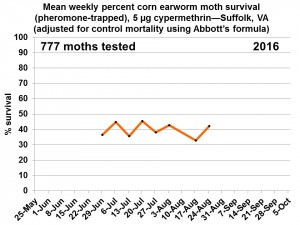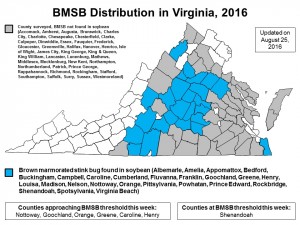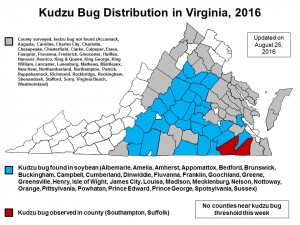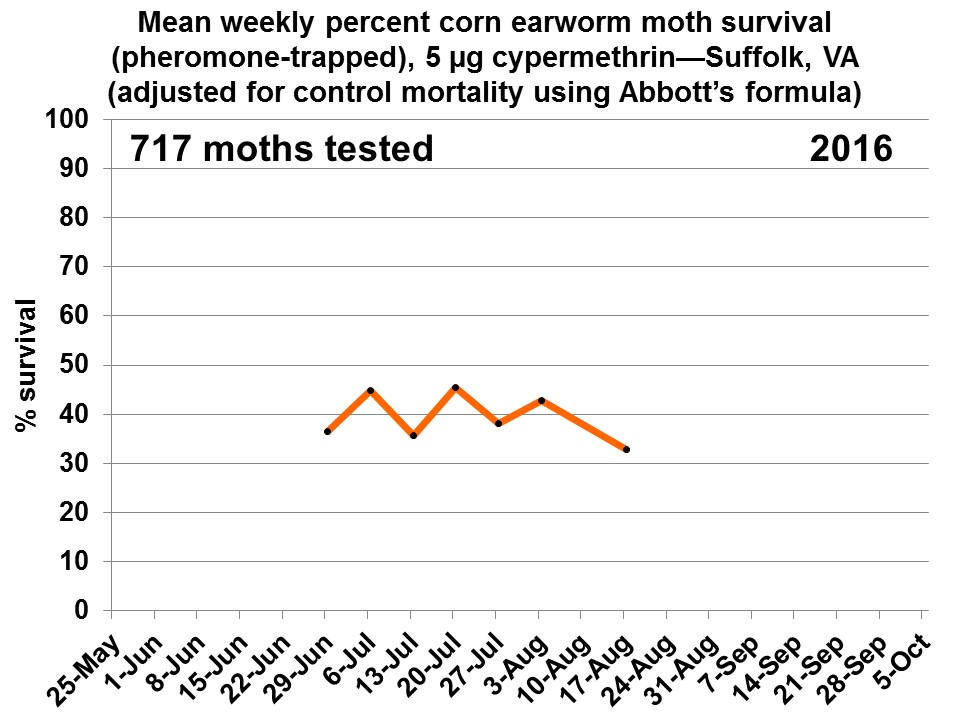There was an uptick in the number of corn earworm moths captured in most black light traps this week. Suffolk was especially high with approximately 38 moths per night. Brown marmorated stink bug counts were low, ranging from none to 1.1 per night. Please see the attached pdf file for the data tables: BLT_1_Sep_2016
Corn earworm/bollworm vial testing: Sep. 1, 2016 update
This week the Virginia Tech Tidewater AREC entomology program evaluated 298 Helicoverpa zea (=corn earworm/bollworm) moths in the cypermethrin vial tests, with 53.1% surviving the 24-hour exposure to the 5 microgram/vial rate. This brings the seasonal average to 42.9% (based on 1,075 Suffolk-collected moths).
Sugarcane aphid in sorghum: Sep. 1, 2016 update
White sugarcane aphid, Melanaphis sacchari, was found infesting sorghum in New Kent county this week. Thanks to ANR Agent John Allison for submitting the sample. Edit to original post: MIke Arrington and Kayla Babb (Tidewater AREC Entomology) reported finding infestations of M. sacchari in Surry County sorghum, near Bacon’s Castle (this is not on the state map).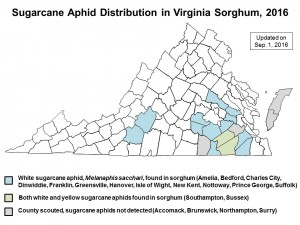
Brown marmorated stink bug and kudzu bug in soybean: Sep. 1, 2016 update
This week, our soybean scouts Ed and Jamie reported two new counties with BMSB this season (Rockingham and Rapphannock). Eight counties had threshold levels of BMSB (3-5 adults+medium & large nymphs per 15 sweeps or 2-minute visual inspection)–see the BMSB map for details. Kudzu bugs were found in one new county–Chesterfield. Over all counties sampled, kudzu bug numbers ranged from zero to 3 per 15 sweeps–still below threshold.
Why is my late-planted 110 day RM maturing in 100 days (or less) this year?
Recent observations from around the state have found corn maturing at a fast pace this year, especially corn that was planted late. The most commonly used method for assigning corn hybrid maturity ratings is based on Days to Maturity. This typically indicates the number of days it would take a corn hybrid to reach physiological maturity or “black layer”. But temperature drives corn development, not calendar days. So the “thermal time” to maturity calculated using growing degree days (GDD) is a more accurate measure. Especially when the growing season has been particularly warmer or cooler than normal.
The chart below shows the difference in cumulative GDD between 2016 and the 30 year mean temperatures beginning on JUNE 1.
We are 6, 7, and 10% above the “normal” GDD accumulation for August 31 at Suffolk, Richmond, and Orange, respectively.
This might explain why a 110 day RM corn is maturing more quickly than expected based on the “day” count. The plant has actually accumulated heat units at a faster rate this year.
If May 1 is the starting point, we are 3, 4, and 7% above the “normal” GDD accumulation for these sites. So this effect is likely to seem greater in later planted corn.
Black light trap captures for the week ending Aug. 25, 2016
Corn earworm/bollworm moth captures in Suffolk averaged 23 per night, but only ranged from < 1 to 4 at other reporting locations this week. Brown marmorated stink bug was only captured at Warsaw (averaging 1.4 per night). Please see the attached data tables for more information. BLT_25_Aug_2016
Sugarcane aphid in sorghum: update for Aug. 25, 2016
Pyrethroid resistance monitoring update for Aug. 25, 2016
BMSB and kudzu bug in soybean: update for Aug. 25, 2016
This past week our scouts found four new Virginia counties with brown marmorated stink bug (BMSB) in soybean (Caroline, Shenandoah, Rockbridge, and Henry). Thresholds for field edges where BMSB is the predominant stink bug species are 3-5 adults + medium and large nymphs per 2-minute visual count, or 3-5 in 15 sweeps. The Shenandoah field (R5 growth stage) that was sampled was above threshold with 8 BMSB per 2-minute count; six counties were approaching threshold (please see the map for specifics).
Kudzu bugs were found in three new counties (Prince George [reported by ANR Agent Scott Reiter), James City, and Franklin). No counties had threshold levels of kudzu bugs (threshold is one nymph per sweep, which equals 15 nymphs per 15 sweeps).


